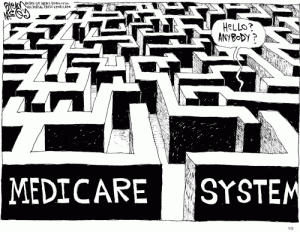Particularly for small and mid-sized companies, putting together the research and business plans for a lender’s package may seem daunting.
Particularly for small and mid-sized companies, putting together the research and business plans for a lender’s package may seem daunting. The increase of liquidity in the senior housing market means that there are many lenders competing to make loans. However, this trend has also led to an increase in the number of packages that lenders must sift through. Below are a few tips from Imran Javaid, managing director at Capital One Bank on what a “perfect” package might include, and how you can differentiate and  communicate your goals to potential lenders.
communicate your goals to potential lenders.
- Start with the basics. Writing the best plan starts with gathering the most useful information for your prospective lender without flooding them with too much data. Having a strong foundation and compelling research to back up your plans is critical. In addition, make sure to include the financials for the exact borrowing entity, and do not add irrelevant information that may distract or confuse the reader.
- Communicate clear goals. Once you have the basic information in place, make sure that your goals and expected outcomes from the transaction are succinctly outlined. Lenders will want to see a clear path for how the borrower plans to use the funds and how the transaction would benefit the borrower’s financial performance.
- Be honest. You want your package to cast a positive light on your business, but it is critical that borrowers be upfront with all relevant information. Leaving out negative information can lead to delays in the process and waste resources. In addition, full disclosure allows the borrower to explain any setbacks in the financial record. This will hopefully be the beginning of a long-term relationship so it is best to be candid about any past issues.
- Do your research. Before submitting any packages, borrowers should do some research on potential lenders to see what type of deals they have done in the past and how successful their past relationships have been. This will allow you to tailor your package to any unique requirements and look for a good fit ahead of time. It will also ensure that the lender will be a good match for your goals and expectations. It is important to look for a lender that has experience and expertise in the seniors housing market and will understand the trends, cycles and challenges unique to your business.
According to Imran, the best approach overall is to be straightforward and present the most important information upfront. Like everyone, lenders have a limited amount of time to review incoming packages. Having a clearly presented document can help the relationship quickly get on the right track.
In addition, third-party or other industry resources may provide recommendations and resources for companies. For example, the nonprofit National Investment Center for Seniors Housing and Care (NIC) is a good source of research and data for owners, operators, developers and capital providers active in the seniors housing and care sector.
Steve Moran








